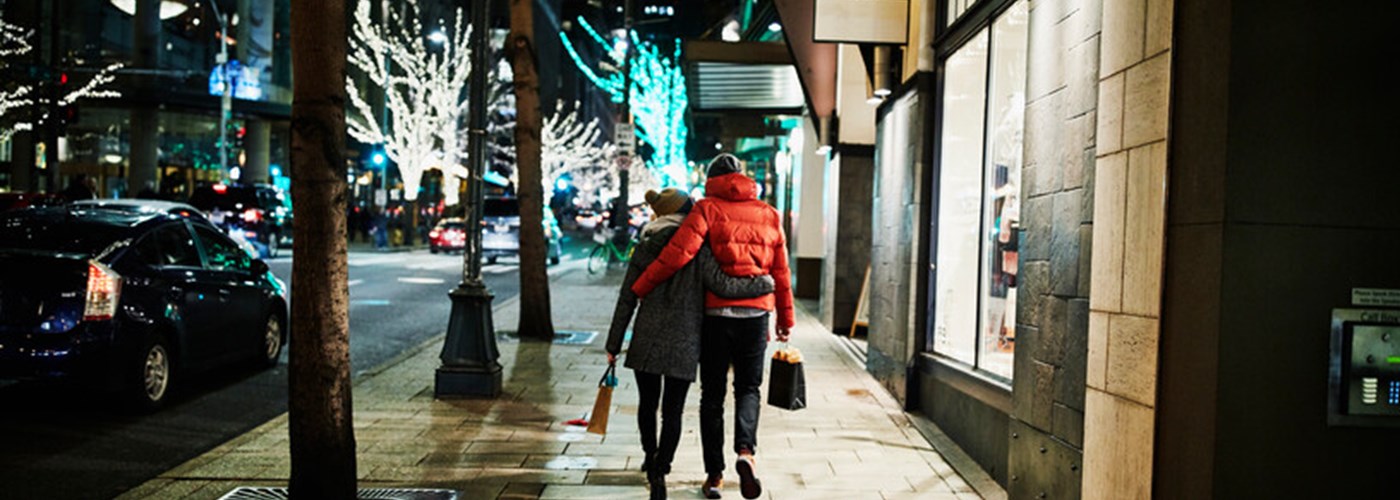8 ways to beat the winter blues
Many of us feel like hibernating in the darkest months but there are ways to counteract the effect reduced exposure to natural light can have on our mood.
What is Seasonal Affective Disorder (SAD)?
At least one in 15 Britons suffers wintertime ‘seasonal affective disorder’ (SAD) – a form of depression triggered by lack of sunlight. Also called the ‘winter blues’, South African psychiatrist Dr Norman Rosenthal first described the condition in the 1980s after suffering seasonal sadness following a move to New York. He says the symptoms of SAD are “feeling slow, having less energy, excessive eating and sleeping, struggling to concentrate, withdrawing from family and friends, and feeling sad”.
Haters of cold weather should take heart however, because there are many ways to prevent slipping into a wintery slump.
Eight ways you can manage Seasonal Affective Disorder (SAD)
Take control of your wellbeing, with these tips to help you manage Seasonal Affective Disorder...
1. Illuminate your interior décor
All forms of light and brightness help fight off the winter blues, says Dr Rosenthal, who has treated more than 1,000 SAD patients.
“Bring more lamps into the room,” he adds, “and concentrate light in one room to cut energy bills.”
Go for LED lights, which tend to be brighter than conventional bulbs, give off a more ‘natural’ spectrum of light and use 90% less energy.
White walls and brightly coloured cushions can also deliver subtle mood-boosting effects.
2. Consider a light box
For some people, ‘light therapy’ can cure a winter blues. “The amount of light you need to treat SAD is more than you can get on a winter’s day,” says Dr Rosenthal.
‘Light boxes’, which emit wavelengths of light similar to natural light are widely available, and Dr Rosenthal recommends models that are at least 30 x 60cm and are tried-and-tested ‘white light’ therapy boxes rather than newer ‘blue light’ versions.
An initial dose that is typically recommended is half an hour in the morning.
3. Spend time with others
Social interaction is a well-known protector against all forms of depression, lowering blood pressure and levels of stress hormones. If you're able, you could see a friend or relative for a catch up or a walk - don't forget to wrap up warm!
If your friends or family don't live close-by, there are some remote ways to connect with your loved ones. Why not give them a call, or even get a group together for a fun video call.
Volunteering has proven benefits to overall mental wellbeing. If it's possible in your area, research what volunteering opportunities are available. It could be a great way to give back, and connect with others.
4. Keep fit and stay active
Exercise can have mood-lifting effects that are as good as taking antidepressant medication.
SAD expert Dr Shanthi Mogali, of Mountainside Treatment Center in Connecticut, USA, says that “feelings of low self-confidence and unhappiness can arise when people are more sedentary, which can happen during the winter. “People should find ways to stay active to benefit from the natural endorphins released through physical fitness.”
Try these 8 ways to get fit for free.
5. Take care with carbs and sugar
The brain is a glucose-hungry organ and people with SAD often find themselves reaching for the biscuit tin. But by eating lots of get-up-and-go carbohydrates, a slump will soon follow.
“The burst of energy doesn’t last long,” says Dr Rosenthal, “and can lead to weight gain that is hard to lose.”
But do eat lots of oily fish and take extra vitamin D – the ‘sunshine vitamin’. Why not have a look at our healthy recipe ideas, including a hearty red lentil and spinach dal and a nourishing super green soup recipe.
6. Get outside
When the mercury drops, going outside to brave the icy air sinks to the bottom of the priority list. But it’s time to pop on your woollies because few things beat natural light – even on a cloudy day.
“Exposure to natural light is key – get outside during the lunch hour, even if it is just to walk around the block,” says Dr Ryan Tobiasz, of The Chicago School of Professional Psychology.
Check out these 7 benefits that come from walking more.
7. Do some early spring cleaning
Light-sensitive cells at the back of the eyes have connections to the body’s internal clock, at the front of the brain.
The body clock may be disrupted in winter, contributing to SAD, so trim the hedges and clean the windows to maximise how much natural light makes it into the home.
Dirty glass will stop 20% of the energising light that would otherwise enter the room.
8. Seek help
Don’t suffer SAD alone, says Dr Mogali.
“It is important that if you are experiencing serious depression then speak to someone as quickly as possible – particularly a healthcare or psychiatric professional,” she adds. Antidepressants and ‘talking therapies’, such as cognitive behavioural therapy (CBT), can help.
About our healthcare
Benenden Health provides affordable private healthcare for everyone, giving you access to services such as our 24/7 GP Helpline and Mental Health Helpline straight away. Once you’ve been a member for six months you can request access to diagnostic consultations and tests.
You'll also have access to a wealth of health and wellbeing articles, videos and advice on a range of health issues.
Find out how Benenden Health can support your health or sign up to our regular e-newsletter and get wellbeing content sent directly to your mailbox.


